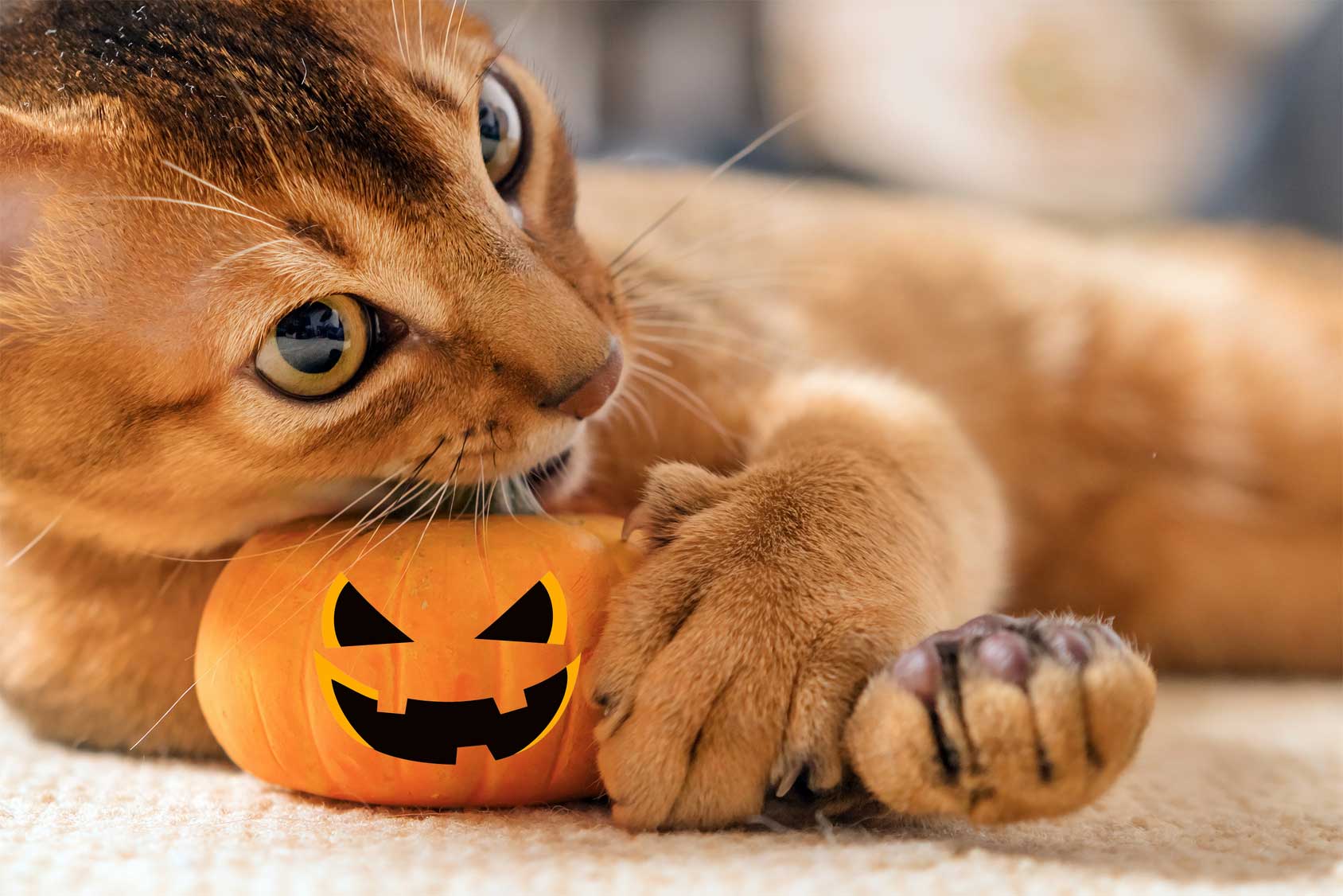From Costumes to Spooky Treats: Pet Safety Tips for Halloween

One of the biggest tricks for a safe Halloween is not letting animals get their paws on any of the holiday treats.
“Keep pets away from candy completely,” says Steve Marks, clinical professor of critical care and internal medicine and director of veterinary services at the North Carolina State University College of Veterinary Medicine (CVM). “Although most pet owners are aware of the hazards of chocolate, other treats contain xylitol, an artificial sweetener which can be toxic to animals.”
Xylitol is often found in sugar-free gum and candies. Other Halloween-favorite treats or party foods and drinks hazardous to pets: lollipops with sticks, alcohol, apple seeds, grapes, raisins walnuts and macadamia nuts. Generally, keep Halloween food away from pets and be sure to tell children not to feed anything to animals.
If you suspect your pet has ingested candy, call your veterinarian immediately.
“The best advice for Halloween is to allow pets to enjoy the holiday in a quiet room,” says Marks, “away from the door and without access to treats or decorations.”
Another issue to consider: pet costumes. A general rule of thumb: Have your pet do a test run in the get-up. Emergency and critical care specialists at the CVM advise trying the outfit on your animal first to check the reaction and make sure it doesn’t impair vision, breathing, hearing or movement.
Halloween pet tips.
Do not use costumes that have small parts, loose ends or anything around the neck. A costumed pet should never be let alone.
Other basic Halloween safety tips:
- Make sure pets can be identified. With the front door constantly opened for trick-or-treaters or parties, there’s a risk of pets running into the neighborhood. Microchips are helpful for identification, as are collars with identifying tags. Even better: a collar that has reflective properties that helps cars see animals near or in roads.
- Halloween decorations vary from simple jack-o-lanterns with candles to glow sticks and high-tech displays that use electricity. Make sure pets do not have access to open flames or electrical wires that can be chewed. Make sure there aren’t decorations within your pets reach or wagging tail than can be eaten or knocked over, leading to choking or burns.
- Pumpkins and other gourds are generally safe for pets to eat, but can cause upset stomachs and diarrhea.
- Pets may not be used to people in costumes and can be easily startled. This can lead to bites, scratches or running away from people your pet perceives as scary. Again, consider putting your pet in a quiet room away from ringing doorbells, costumed visitors and open doors.
- Try to walk your dog earlier on Halloween and keep a tight hold of the leash to avoid any potentially scary encounters.
- Keep outdoor cats indoors on Halloween.
- Feed pets before Halloween activities begin.
If you have an unexpected scare and your veterinarian is not available, the NC State Veterinary Hospital’s Small Animal Emergency Service is open 24 hours a day, seven days a week. It is at 1052 William Moore Drive, near the intersection of Hillsborough Street and Blue Ridge Road in Raleigh. Call 919-513-6911 to inform clinicians of your pet’s emergency.
- Categories:


